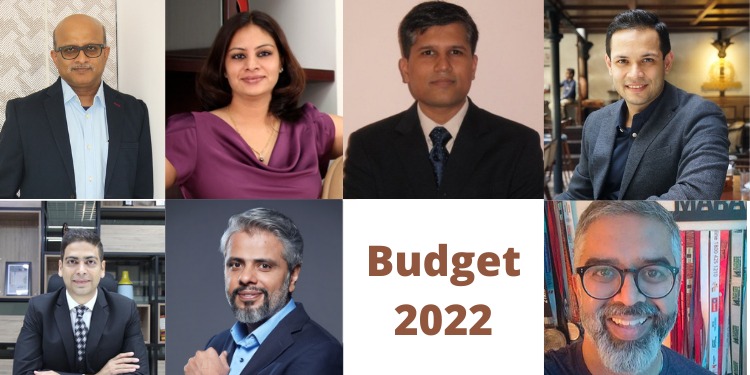Past two years we have seen a dramatic change Covid19 has brought to our lives, whether it is business or for us human beings. Businesses, jobs, saw great upheavals; the world also saw a tectonic shift in the way we communicated. Indian Advertising all through this crisis/ lockdown has been on its feet by innovating new methods of communication for its brands to reach out to its consumers. Brand communication was more empathetic, keeping in mind the sentiments and moods of the consumer in general.
This year’s budget is being keenly watched by the industry, this sector wants the FM to give tax relief to the common man so there is more cash in hand which will boost spending, ease of doing business for start-up, etc. allocation of increased funds for digital adoption of technology.

Shams Jasani, CEO, Wunderman Thompson South Asia: “COVID-19 has defined a “new normal” for businesses and has altered business dynamics and consumer behavior forever. There has been an overall increase in tech spending, and digital will continue to drive growth for the industry. With the uptick in e-commerce activities, most brands are dependent on technology-led solutions to transform their businesses.
We are hopeful that this year’s union budget will be a growth-oriented one, aimed at providing tax relief to boost consumer demand, which in turn can propel brands to increase spending across media in the coming year. Our expectations from the upcoming budget are ease of doing business for MSMes and start-ups, scaling investment in digitization, and fostering better internet connectivity infrastructure to ensure last-mile connectivity with a specific focus on rural areas that will help drive growth.
We hope that this year’s budget will continue to focus on business recovery and sustainable growth with necessary budgetary allocations and tax incentives that will give brands that much-needed impetus to increase marketing spending for their businesses”.

Narayan Devanathan, Chief Client Officer, dentsu India: “Among the many deep impacts of the pandemic is that more cash has gotten out of people’s hands via greater expenses for healthcare, WFH set-ups, remote education for kids, and on top of it, dealing with the effects of a year of further price inflation and, for the salaried class, no pay raises (and in many cases, pay cuts). This means that people will look for more cash in hand, whether through higher standard deduction rates lower tax rates, or other sops.
Secondly, people will look for more cash/sources of livelihood closer to home. The migrant crisis of 2020 showcased a great opportunity to create economic hubs closer to hubs of labor availability; whether by backing MSME growth or macro industrial growth, investments in skilling and establishment of socio-economic hubs closer to the source of labor rather than near the source of capital will be key to leveraging India’s workforce dividend.
For the A&M industry, with digital set to grow to well over a third of the overall advertising spends in the country by 2023, such distributed and multiple economic engines will mean good news in terms of overall growth. Investments in growing addressable opportunities via voice, video, and social commerce will be critical in moving beyond the world of search and text-based content & commerce, bringing both production and consumption within the reach of India’s vast multi-lingual audiences and truly growing the middle class beyond narrow, urban, English-aware cohorts”.

Nitin Karkare, Vice Chairman, FCBUlka: “The role of the advertising industry is to help our clients in their demand generation endeavors. The pandemic has adversely impacted demand, especially at the middle and the bottom end. This is apparent from the divergence in just one sector. While the demand for passenger vehicles is robust, the demand for 2 wheelers is sluggish. There are such examples across sectors. Any intervention from the Government in the budget to boost demand would be welcome. As it would have a multiplier impact in terms of increasing capacity utilization, in turn increasing the private investment, which would fuel employment and consequently boost demand.”

Ambika Sharma of Pulp Strategy: “The union budget 2022 is important for the economic growth and exit from the sluggish economy of the last year, media is deeply connected to the overall growth across sectors. While there will be a sector-wise strategy in the budget for the digital transformation to pick up momentum a solution to the semiconductor shortage should be an area of focus. Semiconductors are necessary for growth and supply for all electronics from Automobile ECUs to POS machines. In December the cabinet approved a 76000, Crore scheme to semiconductor and display manufacturing, it will be important to further boost this initiative to cover the current deficit and then move on to export
Further improve the digital India initiative with stronger policies and allocations in this union budget towards digital adoption of technology, strengthening its commitment to the digital India initiative. Small initiatives like Eg: ensuring all access to technology via SAAS providers in India is in INR and covered under GST and completely doing away with the need for an equalization levy could be covered by the union budget. This will Improve the compliance as well as ease of business for small businesses.
Initiatives to improve the access of finance to MSME’s will be important. The last 2 years have been difficult and initiatives like greater coverage by the TReDS platform, improvement in the response rate of the MSME grievance cell, simplification of access to benefits to exports of services and increased economic incentives for exports of services will provide a boost to the sector. There is a need to improve the organized address of the services sector treating its needs independently of manufacturing”.

Rohan Mehta, the CEO, Kinnect: “The simplification of taxes, combined with smoother transactions through a more simplified process, would go a long way in benefiting our business, as the industry looks forward to a flourishing economy in India in the coming years. Relaxing GST processes will also provide the industry with a much-needed reprieve. Policies that boost spending power across the board and improve the sustainability and profitability of MSMEs will contribute significantly to advertising/media spending.”

Kunal Lakhara, CFO, Pocket Aces: “The government has done well with the Atmanirbhay Package to support the various industries, largely MSMSEs. The Media and Entertainment industry continues to provide large-scale employment opportunities and the industry continues to grow with the growth being led by digital entertainment companies, including OTT platforms, content creators, VFX, and post-production. The Media and Entertainment industry is fast evolving and with the advent of 5G – there will be a further spike in demand in how we consume content, play online games, etc. The government should look to simplify rules relating to the adoption of NFTs, Cryptocurrency, Blockchain, etc. With progressive initiatives such as Digital India, we hope that in the current budget the government will extend export linked incentives especially to MSMEs, and provide impetus to implementing uniform and simplified tax compliance (both direct tax and GST). On personal taxes – The government should look to simplify tax rules around the exercise of ESOPs and provide tax benefits to salaried employees.”

Himanshu Arya, Founder, and CEO- Grapes: “The Indian advertising industry is unfolding at a tremendous pace. It is projected to be the second-fastest-growing advertising market in the Asia-Pacific region. The Indian advertising industry is poised to reach up to 700 billion rupees by 2022 from 564 billion rupees in 2020. Despite the pandemic, the industry has witnessed substantial growth, and this all happened on the back of digitalization. A&M advertising has fairly contributed to the economy and is on an evolving stage due to the rapid expansion in digital media.
With union budget around the corner, I think it’s time the advertising industry should get its due share. The government should strive and encourage innovation and entrepreneurship in the digital media and the ad-tech sector. India has the brightest and sharpest young minds. We should create an atmosphere that is more conducive for the blooming of start-ups, and at the same time, incentivize investments and funding. The government should bring some stimulus packages and formulate policies focusing on digital infrastructure that bolsters the advertising industry. I hope that the forthcoming budget will only accelerate the wheel of the Indian economy.”

















